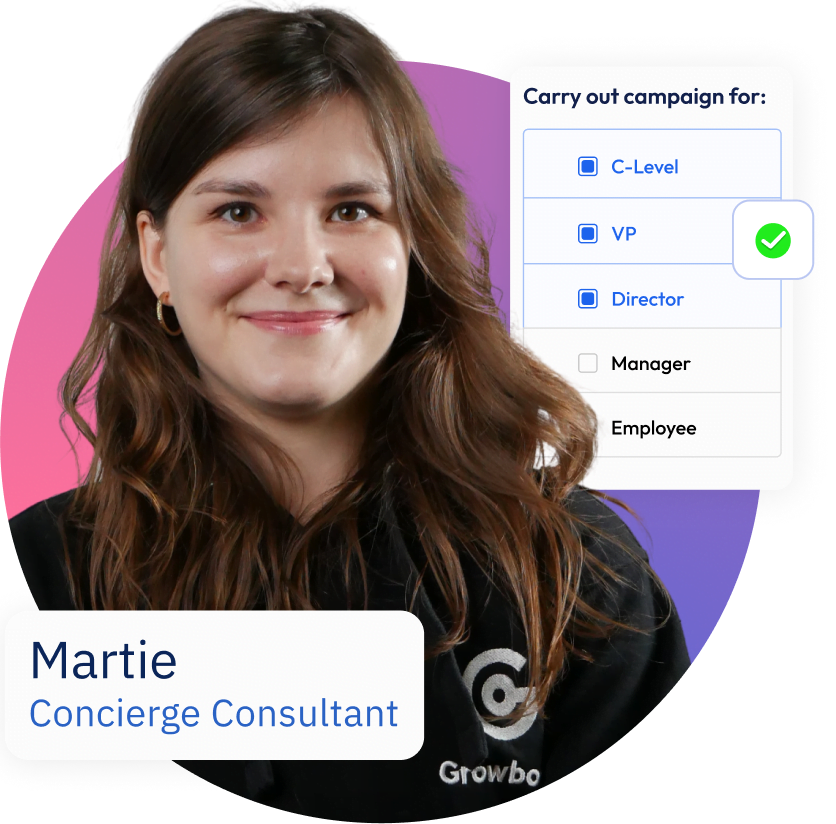Customers love opening emails from strangers.
Now I know what you are going to say, that everybody hates getting cold emails, and guess what: You’re wrong!
When you write the right kind of cold email you have a good chance of getting it read. On Growbots’ platform, our customers have their cold emails opened, wait for it…
50 percent of the time! This astonishing rate is partially down to care with which the contact is picked and partially down to the way the email is worded because…
Personalized messages stay out of the spam folder
When you send an introductory email, you are sending something that is designed to avoid the spam folder. A personalized message which speaks directly to the recipient. These are the kinds of messages we all read.
It first needs to get there. Those processes are pretty straightforward and follow certain rules but there is still someone you need to convince, the recipient.
You need to target your message so your recipient feels that it is a personal communication about something that they need. To that end, there are a few things you shouldn’t do and should do.

Techniques that will turn off a reader and send your email straight to the spam folder (best avoided)
Using deceptive subject lines
It will make your recipient suspicious and destroy your credibility. Instead, focus on what you want to offer. And while we are on the topic…
Misrepresenting who you are
You will be found out and your recipient will lose all trust in its contents. It is a good idea to make sure your From, To, and Reply To are all accurate. There are only a few things to avoid but there are far more things that you can do to proactively ensure your reader will take your email seriously.
11 ways to get your sales email taken seriously (and kept out of the spam folder)
Focus the email on their needs, not yours
Your customers will only respond to solutions to specific needs that they have. Before emailing, do some research into their industry and their company. You can also ask them about their needs. As you aren’t going to focus on yourself you should…
Use a natural writing style
Approach your email like you already know the person. One method is to put the name of a person you already know with similar needs at the top as you write your email. Then write it to them and switch the names out before sending. Another is to write as if you are having a face to face conversation with your recipient. This will allow you to stop thinking of yourself and…
Skip the introduction
You have a limited amount of time to catch your customer’s attention. They are more interested in what you can do for them rather than who you are. Leave your name and your company’s name when you sign off. In its place…
Start by writing your conclusion
Your conclusion contains a request to your customer. By putting it at the top, your customer will be able to know exactly what you want and act accordingly. Think about what you want your customer to do. Make that your first sentence. By getting straight to the point, it will help you to…
Keep it short
We all love novels but not when we are trying to clear out our inbox. The only thing that needs to be in the email are the basic points that you are making. Try to restrict yourself to 4 or 5 sentences. That means that you won’t have time for complexity and with have to…
Keep your arguments digestible
Your argument in a cold email should be easy to understand and act on. Remember you only have 4 sentences to make your point. Write an argument that is clear, direct, and unconditional. Keeping that in mind you will need to leave space to…
End with a question
A question encourages them to respond in kind. Think about what information you will need to better serve the needs of your customer. Ask for it.
In addition to the stylistic elements you include, it is important to provide legitimizing information. It can be useful to…
Provide your physical location
It lends you an air of legitimacy that entities without physical locations just do not possess. A good place is under your signature at the end. Below that you can include…
An opt-out of further emails
Opt-outs give the sender control. Psychological studies have shown that when the customer feels in control they are more likely to respond to your message. Leave a simple P.S. at the end offering them the opportunity to opt out. Of course, when you receive them you should…
Honor opt-out requests
If you fail to honor their request, they will think you are either a spammer. Make sure you stop sending emails in a timely manner. This is common sense thing to do like it is to…
Proofread
Mistakes look sloppy and suggest that you don’t think that the customer is very important. Look over your email before you send it. You can also use a tool like Grammarly to check for mistakes.
So how successful will my message be?
We have had good results using the techniques above. An average of 50 percent of the emails sent out by Growbots’ clients are opened. Of those, roughly 38 percent are responded to and roughly 23 percent of the responses are positive. To put that another way, 5 percent of all cold emails sent by our clients result in a positive reply.
What to do now
The key to getting a cold email to convert is to engage your recipient. It is up to you to create a killer email which sends a clear message about who you are.
For more information about a cold email’s journey to your customer’s inbox, you can read our articles about the laws surrounding cold emailing and how to avoid spam filters putting your email in the spam folder.






















